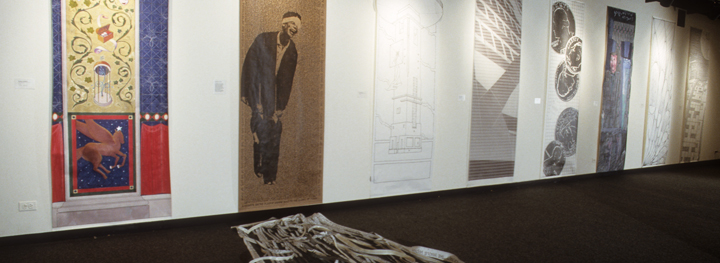Art & Art History
The Idea of Big

Gallery 400
400 South Peoria Street, Chicago, IL 60607
Brad Angelini, Darcy Bonner, John Clark, Jacqueline Clawson, Howard Decker, Victor Dziekiewicz, Paul Florian, Daniel Garber, Richard Gibbons, Janet Goodman/James Lieberman, Julie Hacker, Ray Hartshorne, Aki Knezevic, Tannys Langdon, Jill Lerner, Sam Marts, Andrew Metter/Jim Law, Jordan Moser, Anders Nereim, Peter Noone, James Plunkard, Alan Schechtman, Randy Shear, Rael Slutsky, Peggy Smolka, Richard Solomon, Darryl Strouse, John Syvertsen, Dario Tainer, Leslie Ventsch, Nick Weingarten/Walt Bransford, Daniel Wheeler, Jan Yoder, and Charles Young
The Idea of Big highlights scale changes inherent in the design process by using the latest photocopier technology. Curated by Stephen Wierzbowski, of Florian-Wierzbowski Architecture, and Laurel Bradley, Director of Gallery 400, the exhibition featured architectural drawings in a vertical format, enlarged to nine feet by three feet using the Xerox 2080 process. These were installed in Gallery 400 juxtaposed with a model of the gallery interior, in which minutely proportioned reductions of the original renderings were displayed. The drawings exhibited in The Idea of Big were done by thirty-seven Chicago architects with “new practices:”
The architectural design process involves numerous shifts in scale between conception and execution. To clarify structural details, an architect may render small elements very large; architectural models present very big forms on a drastically reduced scale; a building may be drawn on a small sheet for convenience and then reproduced at a larger scale. Drawings in The Idea of Big treated a wide range of subjects, from buildings and towers to furniture, architectural fragments and elements to purely abstract conceptual renderings. Architects had the option of coloring and making three-dimensional the enlarged drawings.
Laurel Bradley is the founding director of Gallery 400 at the University of Illinois at Chicago. She earned a BA in art history from the University of Oregon, and a PhD from New York University ’s Institute of Fine Arts, for which she wrote a dissertation on Victorian art.
Stephen Wierzbowski has worked as a senior designer for Chicago architectural firm Skidmore Owings & Merrill. In 1981, he became an adjunct assistant professor for the University of Illinois at Chicago’s Architectural Design Studios. The next year, he continued to teach for the university through its traveling studies program in Versailles, France. Wierzbowski has since returned to the Chicago campus, where he continues to teach for the Architectural Design Studios. He earned a BA in architecture from Carnegie Mellon University and an MA in architecture from the University of Illinois at Chicago.